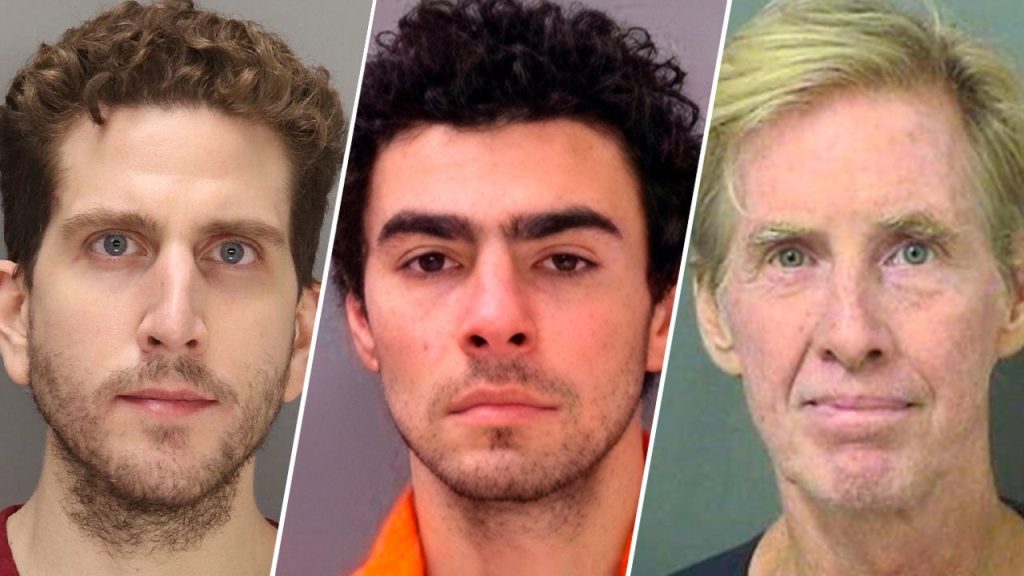Luigi Magnione finds himself entangled in a complex web of legal troubles, facing a litany of charges at both the state and federal levels stemming from alleged criminal activities in Pennsylvania and New York. His arrest in Altoona, Pennsylvania, on December 9, 2024, initiated the legal proceedings, with initial charges related to forgery, illegal possession of firearms, tampering with records, possession of criminal instruments, and providing false identification to law enforcement. These initial charges, while serious, pale in comparison to the subsequent accusations levied against him in Manhattan, New York, which paint a picture of a potentially dangerous individual involved in acts of violence and terrorism.
The state charges in New York escalate the severity of Magnione’s alleged crimes considerably. He faces the gravest accusation of murder in the first degree in furtherance of terrorism, a charge that suggests a premeditated act of violence intended to cause widespread fear and disruption. This charge alone carries significant penalties, potentially including life imprisonment without parole. Adding to the gravity of the situation are two counts of second-degree murder, indicating the deaths of two individuals, further underscoring the potential consequences Magnione faces. The indictment also includes various weapons charges, encompassing possession of firearms of different classifications, hinting at a potential pattern of illegal arms acquisition and possession. Finally, the state charges also include the possession of a forged instrument, suggesting an attempt to deceive or defraud through falsified documents.
Beyond the state charges, Magnione also faces federal prosecution, further complicating his legal predicament. The federal charges focus on the alleged use of a firearm in the commission of murder, a charge that often carries severe penalties under federal law. The indictment also includes interstate stalking resulting in death and stalking through the use of interstate facilities resulting in death, suggesting that Magnione pursued his victims across state lines, adding another layer of complexity to the case. The use of interstate facilities in the commission of a crime often falls under federal jurisdiction due to its interstate nature. Finally, the federal charges also include discharging a firearm equipped with a silencer in furtherance of a crime of violence, indicating a calculated attempt to conceal the act of violence, further emphasizing the potential premeditation and seriousness of the alleged offenses.
The combination of state and federal charges presents a significant legal challenge for Magnione. The state charges, focusing on the act of murder and related offenses, carry severe penalties under New York law. Simultaneously, the federal charges, emphasizing the use of firearms in the commission of violent crimes and the interstate nature of the alleged stalking, expose him to potentially lengthy sentences under federal statutes. The overlap between state and federal jurisdiction adds complexity to the legal proceedings, potentially involving separate trials and sentencing phases.
The specific details surrounding Magnione’s alleged crimes, including the identities of the victims, the motive behind the alleged acts of violence, and the specific nature of the alleged terrorist act, remain largely undisclosed. Further investigation and legal proceedings will likely shed light on these crucial aspects of the case. The evidence gathered by law enforcement and presented during the trial will play a pivotal role in determining the outcome of the case and the ultimate fate of Luigi Magnione. The prosecution will bear the burden of proving his guilt beyond a reasonable doubt, while the defense will likely seek to challenge the evidence and present alternative narratives.
The case of Luigi Magnione underscores the seriousness with which both state and federal authorities treat acts of violence, particularly those involving firearms and alleged terrorist activity. The extensive list of charges against him reflects the potential consequences individuals face when accused of such crimes. As the legal proceedings unfold, the details of the case will become clearer, and the justice system will determine the appropriate course of action. The outcome of this case will serve as a reminder of the importance of upholding the law and holding individuals accountable for their actions, particularly in cases involving violence and potential threats to public safety.

